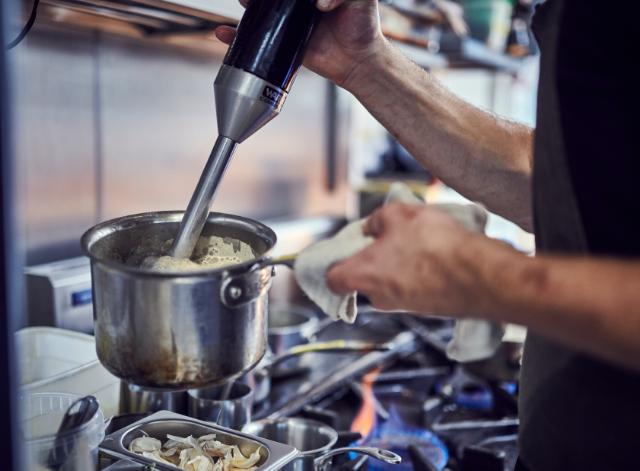
Commercial Kitchen Equipment List
If you’re thinking about opening a restaurant for the first time, considering all the equipment you will need in your kitchen can be overwhelming. Getting the right layout of your commercial kitchen is as crucial for the efficiency of food preparation as having the right tools and equipment for the job. We’ve broken down all the essential bits of kit and equipment a commercial kitchen might need, so that you can make sure you are fully equipped.
Food prep and utensils
- Baking tray
- Mixing bowls
- Chef’s knives
- Whisks
- Tongs
- Spatulas
- Ladles
- Tasting spoons
- Chopping boards
In order to prepare your food before you cook and then serve it, you will need the right utensils and equipment. A range of ladles, stirring spoons and spatulas will be required, as well as mixing bowls, chopping boards and squeeze bottles. Depending on the style of your food and the speed at which you make it, you may also want mixers, food processors and blenders. A good selection of sharp knives is very important. The quantity and range of your kitchen equipment will depend on your business’ capacity – if you have a big kitchen with a large body of staff, you will need more equipment then a kitchen operated by two people. It is also important to take cleaning the equipment into consideration – if all your knives are in the dishwasher, how are you going to chop up the food? Make sure you have plenty of extras.
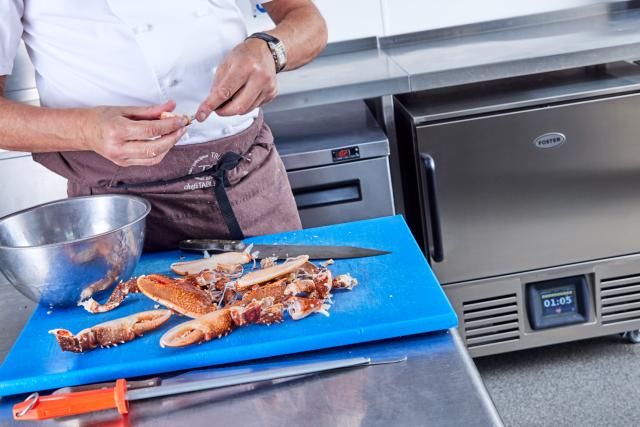
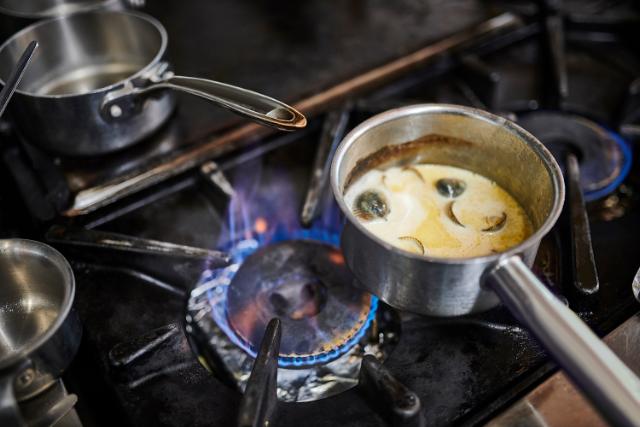
Cooking
- Oven
- Grill
- Hobs
- Deep fryer
- Salamander broiler
- Griddle
- Steam table
- Frying pans
- Saucepans
- Stockpots
There are so many ways to cook food and your needs will change depending on what you serve. Ovens, grills and hobs are essential in all kitchens. Deep fryers, salamander broilers, steam tables and griddles are very popular but not always needed in every kitchen. However, there is some cooking equipment that will only be require for specialist dishes. If you’re serving pizza, for example, you may want a pizza oven – this wouldn’t be required in another kitchen. If you serve breakfast, you may want a commercial toaster and a juicing machine. In terms of the equipment you will cook the food in or on, you will again want a wide range. From stockpots, saucepans and frying pans of all sizes, to baking pans and dishes. There may be more specific equipment that you find you need, such as woks.
Serving
- A range of crockery
- Cutlery
Once your food has been made, you will need something to serve it on. The types of crockery you use will depend on the foods that you serve and your brand identity. But as with everything else, it is good to have a wide range and a high volume. Opt for a variety of plate and bowl sizes to suit whatever is on your menu. If you serve coffee and hit drinks, different sized and shaped mugs are important – you wouldn’t serve an espresso in the same vessel as a latte. The same rule of thumb applies to cutlery. It depends on the food you make, but if steak is on the menu, then the customers will need sharper knives to eat with. Many kitchens will like to take their food and drinks out to guests on trays, so that is something else to consider.

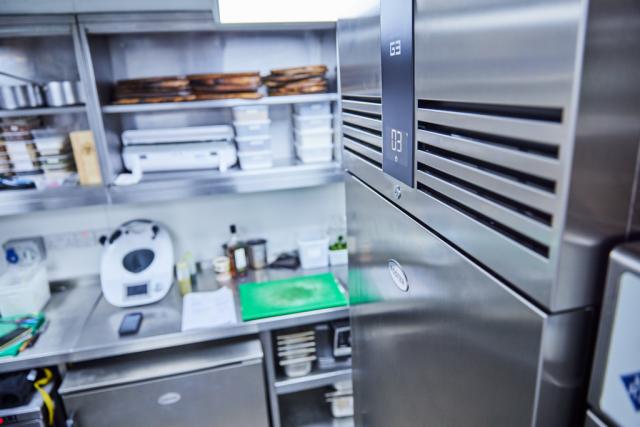
Food storage
Storage
- Commercial shelving
- Storage containers and labels
Food storage ranges from shelving to containers. You will want shelving in walk-in coolers or cabinet refrigerators, as well as around the kitchen – whether attached to walls or in the form of utility carts and sheet pan racks. Drying racks are also required in kitchens – even if you have a dishwasher, it is likely that some items in the kitchen will get washed by hand. Your kitchen should also be equipped with storage containers for your food, and labels to easily identify the contents.
Refrigeration and freezers
Refrigeration is the heart of any commercial kitchen; it is critical for food safety, hygiene, and minimising waste. However, not all fridges do the same job. Choosing the right mix of equipment can significantly improve your kitchen's workflow and save you valuable floor space.
Storage Cabinets (uprights) are the industry standard for holding large volumes of fresh or frozen ingredients in a relatively small footprint, making them essential for daily access. However, for smaller kitchens where every inch counts, Counter Refrigeration is often the smarter choice. These units combine a robust, food-safe preparation worktop with refrigerated storage underneath, effectively giving you two pieces of equipment in the space of one.
If you plan to cook in batches or freeze hot food, a Blast Chiller is indispensable. It rapidly cools cooked food through the "danger zone" to safe temperatures, locking in quality and ensuring you meet strict hygiene regulations. Finally, for high-volume operations, a Walk-in Coldroom offers the ultimate bulk storage solution.
Cleaning and hygiene
- Hand sanitiser
- Cleaning equipment
- Grease traps
There are a range of cleaning supplies needed for a commercial kitchen, such as degreasers, chemicals, anti-bacterial cleaners and dishwasher detergents. Kitchens will have a variety of surfaces that need cleaning, such as worktops, ovens and grills, windows – not to forget the equipment you are using to prepare and cook the food with. As well as the cleaning products, you will need equipment such as mops and buckets, dustpans and brushes, cloths and sponges, rubber gloves and griddle scrapers. To maintain standards of hygiene, your kitchen will also need hand sanitiser, and hair and beard nets for those working with the food. You can get grease traps installed into your plumbing to prevent build up of grease, sediment and solids in your system. The traps can attach to your dishwasher and sinks, keeping your pipes clear and preventing an expensive repair down the line.
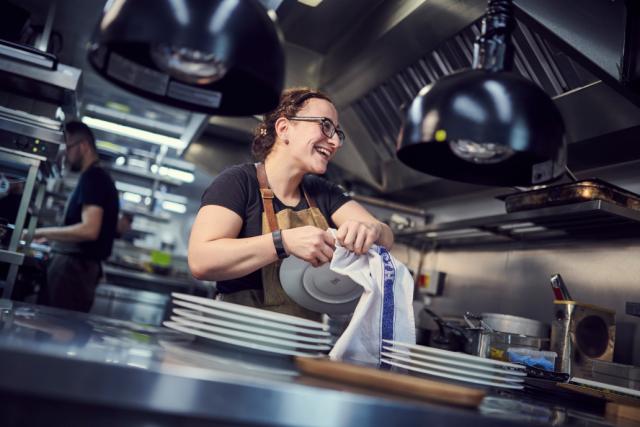
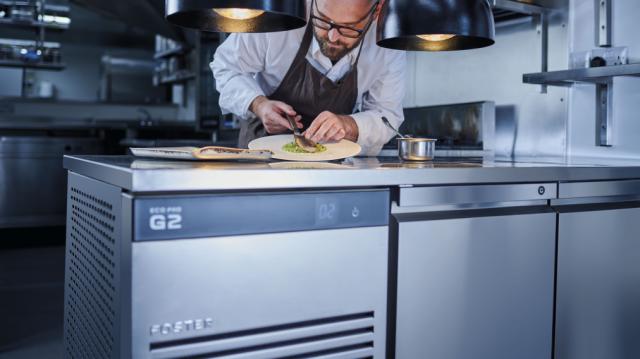
Safety equipment
- Rubber floor mats
- First aid kit
- Fire extinguisher
There are a number of things you will need in a kitchen to ensure it is a safety environment. Considering all the danger hazards in the room – knives, cookers, hot oil etc. – a first aid kit is crucial. You should ensure you have rubber floor mats and that staff wear non-slip shoes. There should also be a wet floor sign for when something has been spilt or the floor has been cleaned. It is crucial every commercial kitchen has a fire extinguisher. You maybe also want cut-resistant, dishwashing and freezer gloves, as well as oven mitts, to protect workers’ hands. Aprons can also provide a protective layer, while also preventing mess.
Other equipment
- POS system with kitchen printer
A point of sales system (POS system) will be needed in the front of house for when orders are being placed. You should sure the POS system is connected to a kitchen printer – also known as an impact or dot matrix printer. The equipment will then print out the order, running an efficient system of informing the kitchen staff of what dishes to make. Some kitchens may need one printer, other may require multiple – one for the prep stage and one for cooking, for example.

Not sure where to begin?
Opening a restaurant? Talk to our experts about your kitchen planning questions.

